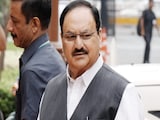Thomas Alva Edison, one of history's most well-known and prolific innovators, greatly impacted contemporary living by creating innovations including the motion picture camera, phonograph, and lightbulb in addition to enhancing the telegraph and telephone. However, not many are aware that his last breath has been contained in a test tube in Michigan, United States, as per a report in Science Alert. Much like many people across the globe, American industrialist Henry Ford also idolized the inventor and is believed to have asked Mr Edison's son to bottle his father's last breath to remember him. The test tube is also kept in the Henry Ford Museum, located in Dearborn, Michigan.
As per popular beliefs and the museum description, in 1931, Mr Ford asked Charles Edison to catch his father's final breath and sit beside him with test tubes close to his mouth. "Ford was a man with many eccentricities (as was Edison) including some interest in reanimation and spiritualism, and some say that he was attempting to capture Edison's soul as it escaped his body in hopes of later reanimating the inventor," the museum wrote.
As per the outlet, there were not one but eight test tubes "very near" his bed. "In the words of Charles, 'Though he is mainly remembered for his work in electrical fields, his real love was chemistry. It is not strange, but symbolic, that those test tubes were close to him at the end. Immediately after his passing, I asked Dr. Hubert S. Howe, his attending physician, to seal them with paraffin. He did. Later I gave one of them to Mr. Ford," the Michigan-based museum said.
Mr Ford's possessions were given to the Henry Ford Museum in Dearborn, Michigan, after he died in 1947, after which they had been kept in a box for more than 20 years. The test tube was then recovered in 1978 by the staff members along with several other things and it has been on display ever since. As per Science Alert, even while the test tube has become legendary, many people argue that the incident may not have happened precisely as it was reported.
Mr Ford was an employee at Mr Edison's company where he worked as a chief engineer. Mr Ford eventually had the opportunity to contact Edison and present his automobile innovation idea during an office party. The two became close friends and spent a lot of time with each other- often influencing each other's work.















